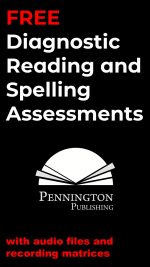 Have you ever noticed how your English teachers and professors insist on discussing a novel or an article and its author in the present tense? For example, when analyzing Hemingway’s For Whom the Bell Tolls, your teacher might say, “In Chapter 7, Hemingway builds suspense in the conversation between Pilar and Robert Jordan. The two walk into the cave and discover that one packet of explosives is missing.”
Have you ever noticed how your English teachers and professors insist on discussing a novel or an article and its author in the present tense? For example, when analyzing Hemingway’s For Whom the Bell Tolls, your teacher might say, “In Chapter 7, Hemingway builds suspense in the conversation between Pilar and Robert Jordan. The two walk into the cave and discover that one packet of explosives is missing.”
And most of you remember that we also write a literary analysis in the present tense, unless you want a considerable number of red ink written on your essay.
Now, last I checked, Ernest Hemingway died in 1961. But we still discuss him and his writing as if he were alive, because the author and his ideas remain relevant.
Not only should we discuss authors and text as if they are alive, we should also read as if the author and text are alive. It does take a bit of imagination, but if we treat the author and story as living, it’s much easier to have a conversational rapport with the writer and characters within the story.
You see, reading to a corpse would be a one-way conversation, unless zombies come into play. Reading with living, breathing authors and their characters can become engaging two-way conversations.
The point is… if you tend to understand reading as a one-way street in which you passively retrieve meaning from the text, this two-way street in which you, the reader,  are actively interacting with the author, is quite different. To demonstrate this difference, let’s read a passage together from Charles Dickens’ Tale of Two Cities as passive readers. Since Dickens was, or… is British, I’ll try to read with an English accent. I know… it’s horrible, but it will serve a purpose:
are actively interacting with the author, is quite different. To demonstrate this difference, let’s read a passage together from Charles Dickens’ Tale of Two Cities as passive readers. Since Dickens was, or… is British, I’ll try to read with an English accent. I know… it’s horrible, but it will serve a purpose:
It was the best of times, it was the worst of times, it was the age of wisdom, it was the age of foolishness, it was the epoch of belief, it was the epoch of incredulity, it was the season of Light, it was the season of Darkness, it was the spring of hope, it was the winter of despair, we had everything before us, we had nothing before us, we were all going direct to Heaven, we were all going direct the other way—in short, the period was so far like the present period, that some of its noisiest authorities insisted on its being received, for good or for evil, in the superlative degree of comparison only.
There were a king with a large jaw and a queen with a plain face, on the throne of England; there were a king with a large jaw and a queen with a fair face, on the throne of France. In both countries it was clearer than crystal to the lords of the State preserves of loaves and fishes, that things in general were settled for ever.

Talking to the Author
Talking with the Author
Now, let’s read the same passage, and I will model how an active reader carries on a conversation with the author in red.
It was the best of times, it was the worst of times, Dickens clearly means to describe a universal theme with this general language. So often we tend to see good times as being the norm. Other times we look back at some eras as “the good old days” when they really weren’t that good. Hindsight is never 20-20 vision.
it was the age of wisdom, it was the age of foolishness, I see Dicken’s paradoxical patterns of the good to its bad opposite, but his extremes make me think that he is writing somewhat tongue-in-cheek. Nothing is life is that clear, especially when we are in the midst of experiencing it. His parallel structures of “It was the” use the absolute factual use of the “to be” verb and the definite article, “the,” to describe a time of no gray areas. It was one way or the other.
it was the epoch of belief, it was the epoch of incredulity, I know that some of the setting of this novel takes place during the French Revolution and that the two cities are Paris and London. My guess is that Dickens, an Englishman, is going to favor the ideals of his own London, and disparage those of Paris. The traditions of the Church were being challenged by the thinking of the Enlightenment. Faith versus reason. Dickens unfairly places the Enlightenment thinkers in the evil position. I, personally don’t see faith and reason as a necessary paradox, either.
it was the season of Light, it was the season of Darkness, it was the spring of hope, it was the winter of despair, These polar opposites have everything to do with one’s perspective. For some the changes during this period of history were positive and the outlook was bright; for others, the events challenged everything they had ever known to be true and good. I would wager that for a whole lot of people, what was taking place was a mixed bag of good and bad.
Why doesn’t Dickens include the haves and have nots in his opening? If class differences are a key part of the historical setting as in the musical, Les Miserables, why did the author leave out these paired extremes?
we had everything before us, we had nothing before us, Not sure what this means, unless Dicken’s is commenting on “hope” and “despair.”
we were all going direct to Heaven, we were all going direct the other way—Think this was meant to be humorous. Interesting how Hell is an unmentionable. Perhaps a curse word.
in short, the period was so far like the present period, that some of its noisiest authorities insisted on its being received, for good or for evil, in the superlative degree of comparison only. The language is tough to dissect here. “… the period was so far like the present period…” The “so far” could mean that it closely resembled the time of Dicken’s writing. The “noisiest authorities” might be the most popular voices of those times. This paragraph is all one long sentence. It seems that these contradictions of the past went on forever without resolution. What is Dickens up to here? Is he using this novel to criticize the present state of affairs in England?
There were a king with a large jaw and a queen with a plain face, on the throne of England; there were a king with a large jaw and a queen with a fair face, on the throne of France. In other words, there wasn’t much difference between rulers. Perhaps due to intermarriage, or more likely in their beliefs about the divine right to rule. Some things never seem to change. I notice Dickens doesn’t allude to the present queen at the current time, Queen Victoria.
In both countries it was clearer than crystal to the lords of the State preserves of loaves and fishes, that things in general were settled for ever. The loaves and fishes allusion of miraculously making something great out of very little, such as the expansion of citizens’ freedoms and rights or democracy were not realistic, nor likely during those times. Is Dickens saying the same about his current times and knocking the English monarchy?
If the reader-response strategy, which I call Talking with the Author, worked as planned, you would notice that your understanding and retention of the reading passage were significantly better with the second reading, as compared to the first reading. Notice that the window of meaning seemed to shift more toward the reader because of the universal themes and application to present times.
You may have noticed that my comments in the conversation were of different types. I focused on what the author said and how the author said it; I also commented on what the author did not say and what the author may have meant. Additionally, I criticized and questioned. I repeated the author’s words and re-read in order to clarify. I speculated about the author’s motive and where he was coming from. I also through in my own two cents as I might in a real one-on-one conversation. However, I tried to focus on the author’s meaning and ideas, and not only my personal experience.
Now, the Talking with the Author strategy takes practice to perfect. You can use this strategy with every genre and amount of reading. Practice doing so with texts and Facebook posts, emails, novels, articles, and technical documents.
Of course you noticed that I was making my comments out loud. My suggestion is to read the author’s text silently, but to subvocalize your comments as you begin to use this Talking with the Author strategy. I describe subvocalization as using a six-inch voice to talk to the author. Don’t worry, your author isn’t hard of hearing.
Some of you may have reservations about implementing this strategy. Interrupting the flow of your reading by talking to the author may seem stilted or unnatural. I certainly make used more reader-response in my example than I normally would to demonstrate the different types and breadth of comments. Not every sentence requires a comment. Instead of chunking the text into interrupted parts, you will begin to see a greater flow of ideas and you insert your comments.
At first, you may find it difficult to keep up your share of the author-reader conversation. This new way of reading, in which you, the reader, have a role in the conversation takes some getting used to. Make sure to develop a balance in the types of comments you make, so that you aren’t solely making comments, say, about word usage.
Using the Talking with the Author technique will also temporarily slow down your reading. You may be tempted to use the strategy only with text which isn’t required and undesirable reading, perhaps for school or work. Resist this temptation and allot a bit more time for the subvocalizations for a while. If you practice reading the old way for some things and the new way for others, you will never develop the automaticity that is necessary for effective reading-response.
I do want to assure you that your decreased reading speed will only be a temporary issue. As the reader-response becomes second nature to you, you will naturally begin to replace the oral comments with silent ones. Gradually, the fully developed comments will become thought snippets. Much like milli-second dreams, these snippets can contain significant data. Our brains are simply amazing!
To doubters, I will add that I’ve replicated an informal reading-research study countless times which consistently demonstrates that readers using the Talking with the Author strategy not only score higher on reading comprehension tests, but also on reading speed. The better we process information, the faster we do so.
I would like to close our lecture with a reminder of the “no pain, no gain” truism. Replacing old habits with new habits is always challenging, especially when you have been practicing the old habit for years. Yes, young and old, alike, we all get set in our ways. However, be encouraged that you can teach an old dog new tricks. The rewards of better comprehension and more enjoyment of what you read will outweigh the discomfort of replacing an old habit with a new habit.
FREE DOWNLOAD TO ASSESS THE QUALITY OF PENNINGTON PUBLISHING RESOURCES: The SCRIP (Summarize, Connect, Re-think, Interpret, and Predict) Comprehension Strategies includes class posters, five lessons to introduce the strategies, and the SCRIP Comprehension Bookmarks.
Get the SCRIP Comprehension Strategies FREE Resource:

*****

The Science of Reading Intervention Program
The Science of Reading Intervention Program: Word Recognition includes explicit, scripted instruction and practice with the 5 Daily Google Slide Activities every reading intervention student needs: 1. Phonemic Awareness and Morphology 2. Blending, Segmenting, and Spelling 3. Sounds and Spellings (including handwriting) 4. Heart Words Practice 5. Sam and Friends Phonics Books (decodables). Plus, digital and printable sound wall cards and speech articulation songs. Print versions are available for all activities. First Half of the Year Program (55 minutes-per-day, 18 weeks)
The Science of Reading Intervention Program: Language Comprehension resources are designed for students who have completed the word recognition program or have demonstrated basic mastery of the alphabetic code and can read with some degree of fluency. The program features the 5 Weekly Language Comprehension Activities: 1. Background Knowledge Mentor Texts 2. Academic Language, Greek and Latin Morphology, Figures of Speech, Connotations, Multiple Meaning Words 3. Syntax in Reading 4. Reading Comprehension Strategies 5. Literacy Knowledge (Narrative and Expository). Second Half of the Year Program (30 minutes-per-day, 18 weeks)
The Science of Reading Intervention Program: Assessment-based Instruction provides diagnostically-based “second chance” instructional resources. The program includes 13 comprehensive assessments and matching instructional resources to fill in the yet-to-be-mastered gaps in phonemic awareness, alphabetic awareness, phonics, fluency (with YouTube modeled readings), Heart Words and Phonics Games, spelling patterns, grammar, usage, and mechanics, syllabication and morphology, executive function shills. Second Half of the Year Program (25 minutes-per-day, 18 weeks)
The Science of Reading Intervention Program BUNDLE includes all 3 program components for the comprehensive, state-of-the-art (and science) grades 4-adult full-year program. Scripted, easy-to-teach, no prep, no need for time-consuming (albeit valuable) LETRS training or O-G certification… Learn as you teach and get results NOW for your students. Print to speech with plenty of speech to print instructional components.
Literacy Centers, Reading, Spelling/Vocabulary, Study Skills
author-reader relationship, louise rosenblatt, Mark Pennington, reader response theory, reading comprehension, Teaching Reading Strategies

![]()










